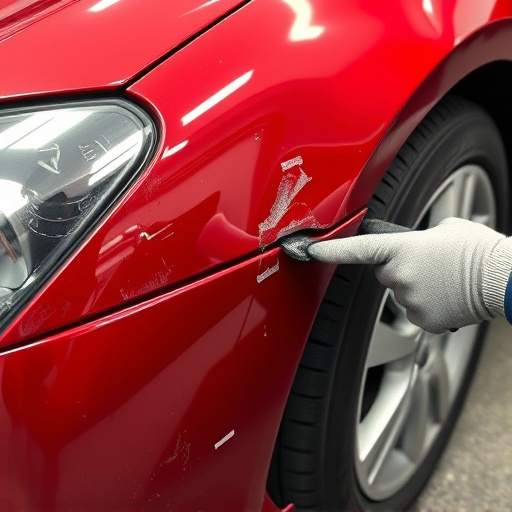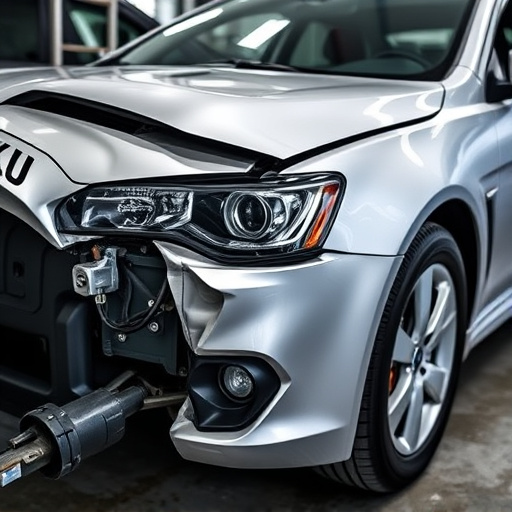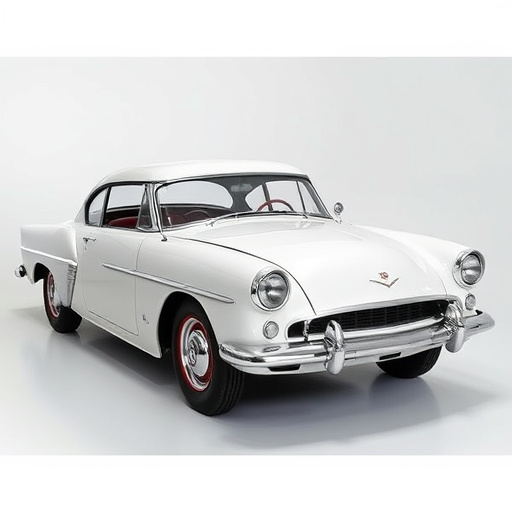Spectrophotometer color matching is a specialized technique using advanced equipment to accurately analyze and replicate colors, vital in industries like tire services, auto collision repair, and car body restoration. This technology measures light reflectance at specific wavelengths, enabling technicians to identify and reproduce colors with remarkable precision. By comparing measurements against known standards, it determines exact color compositions, guiding the mixing of pigments for seamless blends with vehicle surfaces. Ideal for automotive sectors, it enhances productivity, reduces waste, and ensures consistent color outcomes in repairs like car scratch fixing.
“Dive into the precise world of spectrophotometer color matching, a game-changer in ensuring accurate color replication. This technology, grounded in measuring light absorption, plays a pivotal role across industries demanding consistent hues. From manufacturing to art restoration, understanding how spectrophotometer color matching works is key to achieving flawless results. Explore the fundamentals, uncover the inner workings of these advanced tools, and discover the vast applications that make this method indispensable.”
- Understanding Spectrophotometer Color Matching: The Basics
- How Does a Spectrophotometer Work in Color Matching?
- Applications and Advantages of Spectrophotometer Color Matching
Understanding Spectrophotometer Color Matching: The Basics

Spectrophotometer color matching is a precise technique that utilizes specialized equipment to analyze and replicate colors accurately. It’s a crucial process in industries such as tire services, auto collision repair, and car body restoration, where maintaining consistent and exact color matches across vehicle components is vital. This technology works by measuring the reflectance of light at specific wavelengths, enabling technicians to identify and reproduce colors with remarkable accuracy.
The spectrophotometer, a key instrument in this process, measures how much light is reflected or transmitted at different wavelengths, typically in the visible spectrum. By comparing these measurements against known color standards, technicians can determine the exact color composition of a sample. This information then guides them in mixing pigments and dyes to match the original color precisely, ensuring that repaired or replaced parts blend seamlessly with the surrounding vehicle surface.
How Does a Spectrophotometer Work in Color Matching?

A spectrophotometer is a powerful tool used in color matching, particularly in industries like automotive repair and vehicle body refinishing. Its core function revolves around measuring and analyzing light absorption at specific wavelengths to determine color accuracy. When it comes to color matching for car scratch repair or other automotive applications, the spectrophotometer plays a crucial role in achieving precise results.
The device operates by shining light of known wavelength through a sample, which can be a small swatch of paint or material from a vehicle’s body. The light interacts with the sample’s molecules, and the resulting transmitted or absorbed light is measured across a range of wavelengths. This data allows the spectrophotometer to calculate color parameters, such as L (lightness), a (redness/greenness), and b* (yellowness/blueness), enabling experts in vehicle body repair to match colors precisely. This ensures that any repaired or replaced parts blend seamlessly with the existing finish, maintaining the car’s original appearance.
Applications and Advantages of Spectrophotometer Color Matching

Spectrophotometer color matching is a precise and efficient method that finds applications across various industries. It plays a pivotal role in ensuring accurate color replication during manufacturing processes, particularly in sectors like printing, textiles, and even automotive repair. For instance, in car scratch repair and body shop services, spectrophotometry ensures that the restored vehicle’s finish matches the original color perfectly. This technology analyzes light absorption at specific wavelengths, enabling technicians to mix pigments precisely for a flawless match.
The advantages of this technique are numerous. It enhances productivity by reducing manual mixing and adjusting times, thus saving labor costs. Moreover, it minimizes waste as the exact amount of pigment required is calculated, leading to eco-friendly practices. Spectrophotometer color matching also ensures consistency in color outcomes, making it invaluable for quality control measures in body shop services and car restoration projects.
Spectrophotometer color matching is a powerful tool that revolutionizes how we perceive and analyze colors. By understanding its fundamentals, the science behind its operation, and exploring diverse applications, we can harness this technology’s advantages for accurate color measurement and reproduction. Whether in industries like manufacturing, textiles, or graphic design, spectrophotometers offer precise, data-driven solutions for achieving consistent and desirable color outcomes.














